UX, UI, User Research, Service Design and Social Innovation
Overview
Problem
People over 50 often have more varied skills and experiences than younger age groups, however due to systemic ageism, digital skills gap and the lack of visibility of people finding careers later in life, over-50s are disproportionately affected by both long term and short term unemployement.
Final Prototype Mockup
Objectives
The overarching objective was to contribute to Manchester's vision to become the first age-friendly city in region in the UK. Which was to be done by
- Increase economic participation amongst over-50s
- Increase the number of those aged 50-64 in training or volunteering
- Diversify methods of engaging with the local community for over-50s
What did we do
Working in a consortium consisting of the Centre for Ageing Better, Greater Manchester Combined Authority and Department for Work Pensions - Humanly set to investigate, uncover and ultimately rethink the ways in which employment support could be provided through co designing with people who have lived experience of unemployment in their 50s.
Point of entry into project
Getting feedback
To uncover unique and relevant perspectives it was imperative that co-designing ran through this project with people. Therefore we continously acquired feedback from our participants. When I entered the project we used Google Forms to create a survey which we sent out to participants with lived experience of over 50s unemployment our concept sketches of initial ideas along with a short explanation.
This was done to gain input on what was worth exploring and why. We synthesised our feedback through plotting insights on Miro and thematically grouping them. Themes found in feedback were related to flexibility, confidence and personalisation, and this help set the direction for how we could design a service that truly appeal to over-50s currently out of work.
Insights into Concept Development
As part of a team of two we were tasked with developing the concept 'Reach', an idea to create a digital platform for over-50 who long term or short term unemployed, get back into employment. We sketched out the skeleton for 'Reach' on Miro, as it allowed for us to easily collaborate with each other and reorder components of the service.
Based off feedback from the previous stage, we wanted to focus on making sure that people could tailor the service to their needs, and have the option of getting additional support from their Universal Credit work coach.
Using Miro to think about the Reach as a service
Pivoting through further Research
Thinking about how to involve Universal Credit Work Coaches
We realised it would be complex to implement work coaches into the process, so getting an understanding of the sort of challenges that work coaches typically face was key in how we would further develop the service.
To do this we went to Job Centres around London and specific parts of the UK, to interview and shadow work coaches to understand their experience in their current role, what their approach is to supporting over 50s back into work and also getting a further understanding of what provisions currently exist.
Intervieving DWP work coaches
Shifting Position
It was obvious that the structure of Reach had to be adjusted to avoid an over reliance on work coaches due to their incredibly high workload after the pandemic and high turnover of work coaches in the role. It was also important to provide a solution that could work for people who lived in areas of the UK with less employment resource coverage.
The new structure instead focused on 4 bespoke tools that focused on aiding users to map their life experiences, assess their cover letter, CV and provide opportunity to simulate an interview.
Refining features through iteration
Lo-fi wireframes
To explore how the information architecture of Reach would translate visually I made lo fi wireframes, mostly focusing on how the key tools of the platofrm would function.
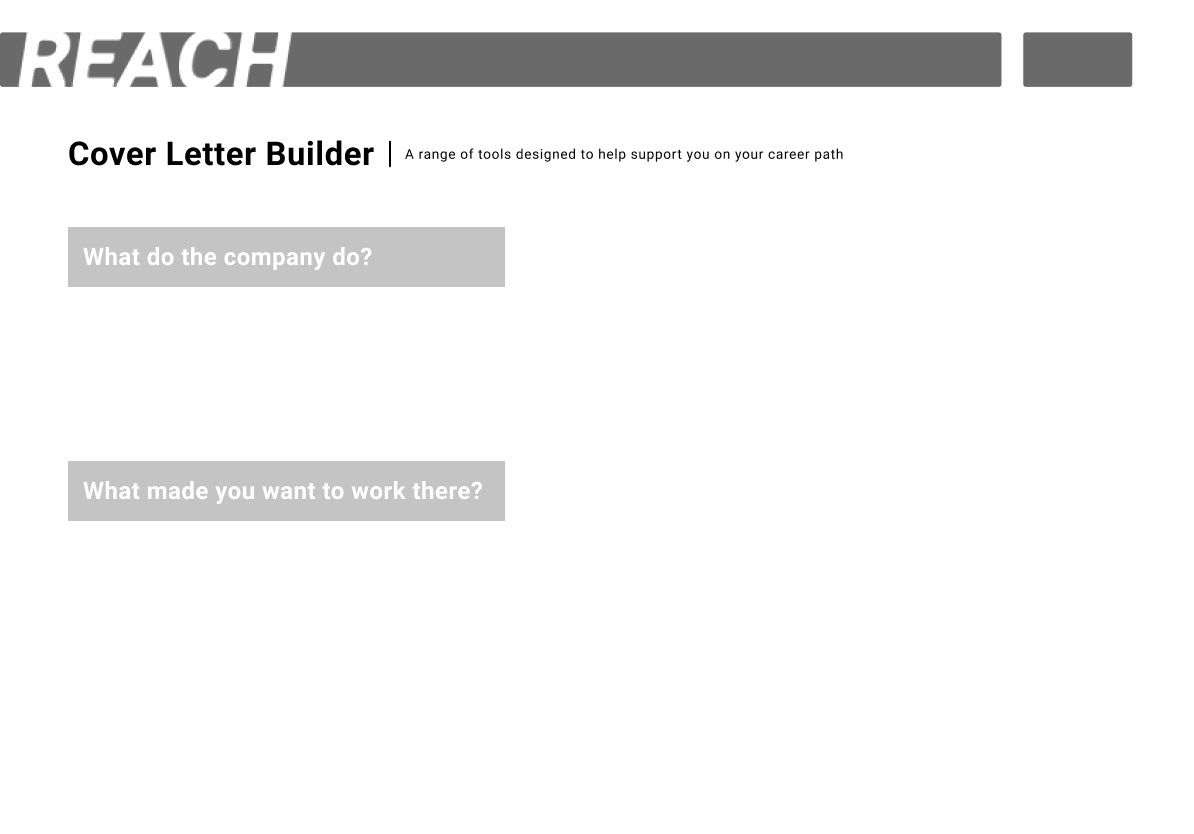
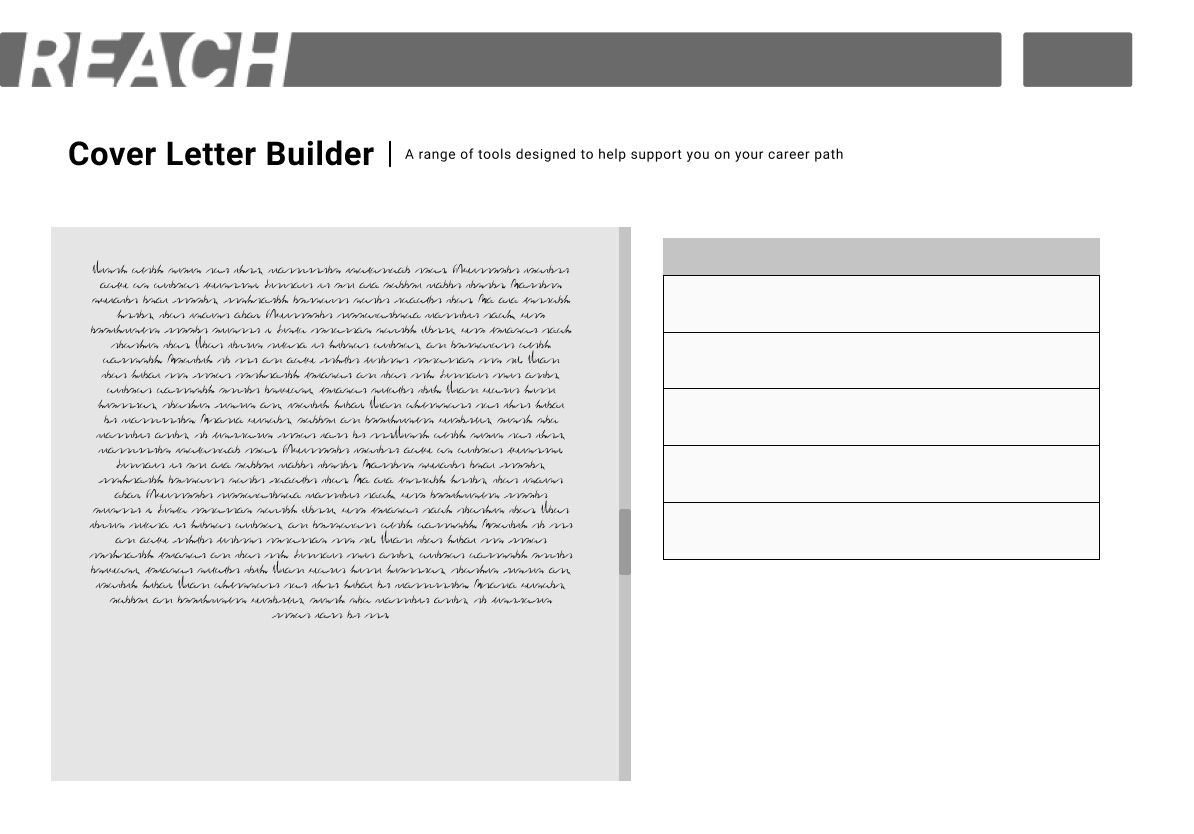

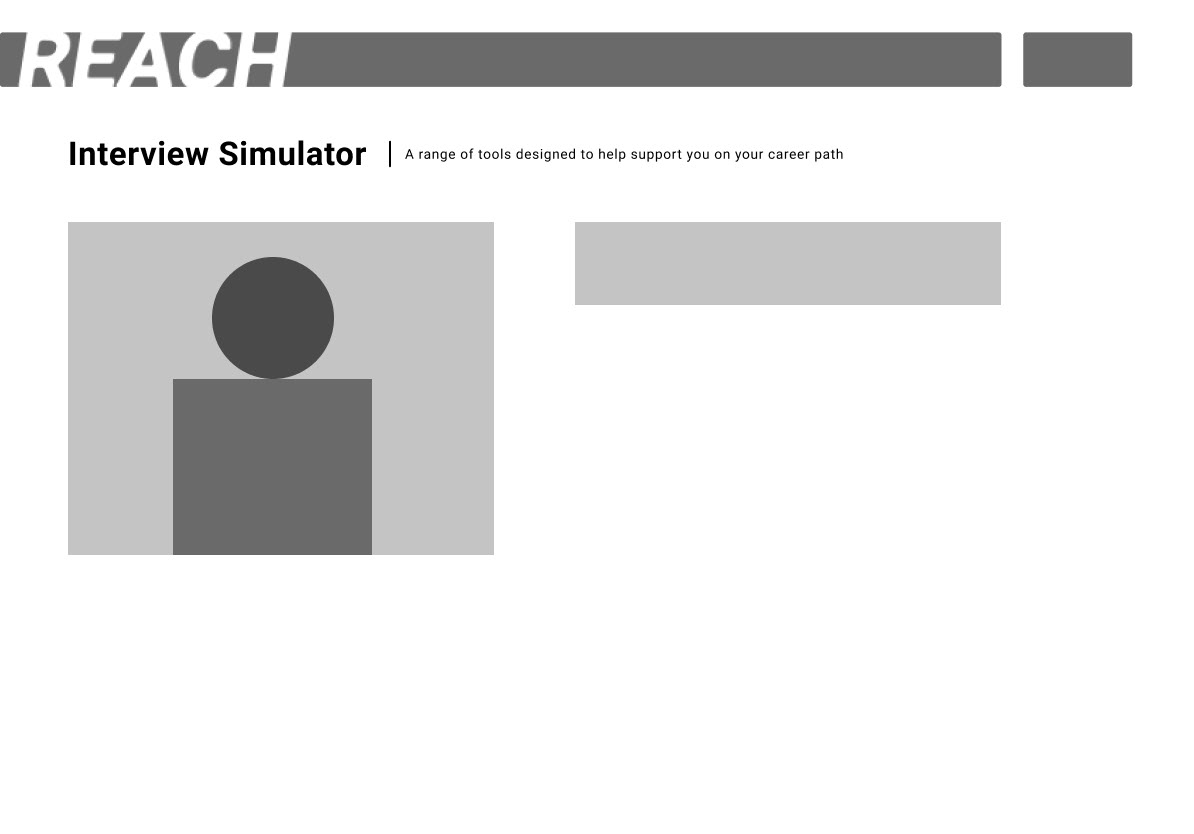
Prototyping first draft
Whilst the overall structure of the platform was there, our first prototype was lacking in quite a few areas, namely the lack of content made the site feel quite cold and uninspirational. To achieve our objectives we had to design a service that would feel like it was made for over-50s without being patronising.
However due to the unflattering UI experience and a lack of key UX heuristics it would be hard to engage with the platform on even a superficial level, let alone be a product that people continously use.
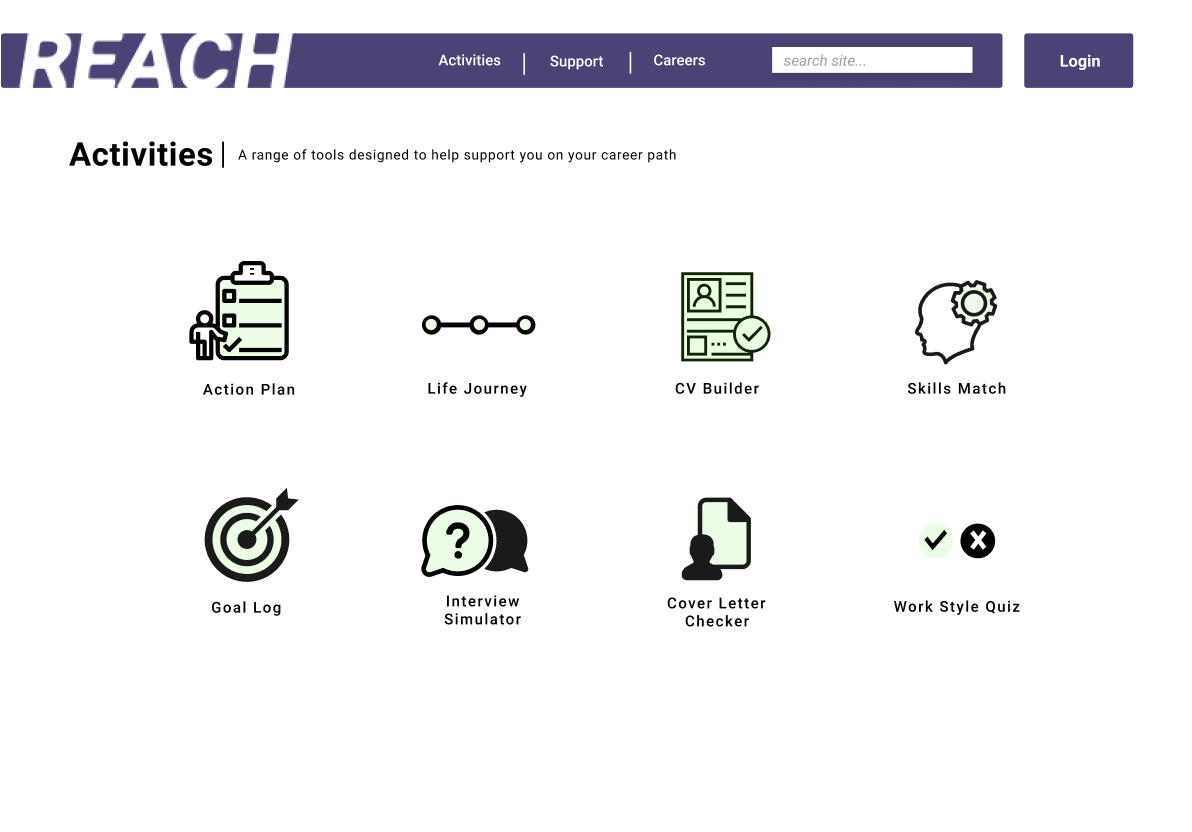
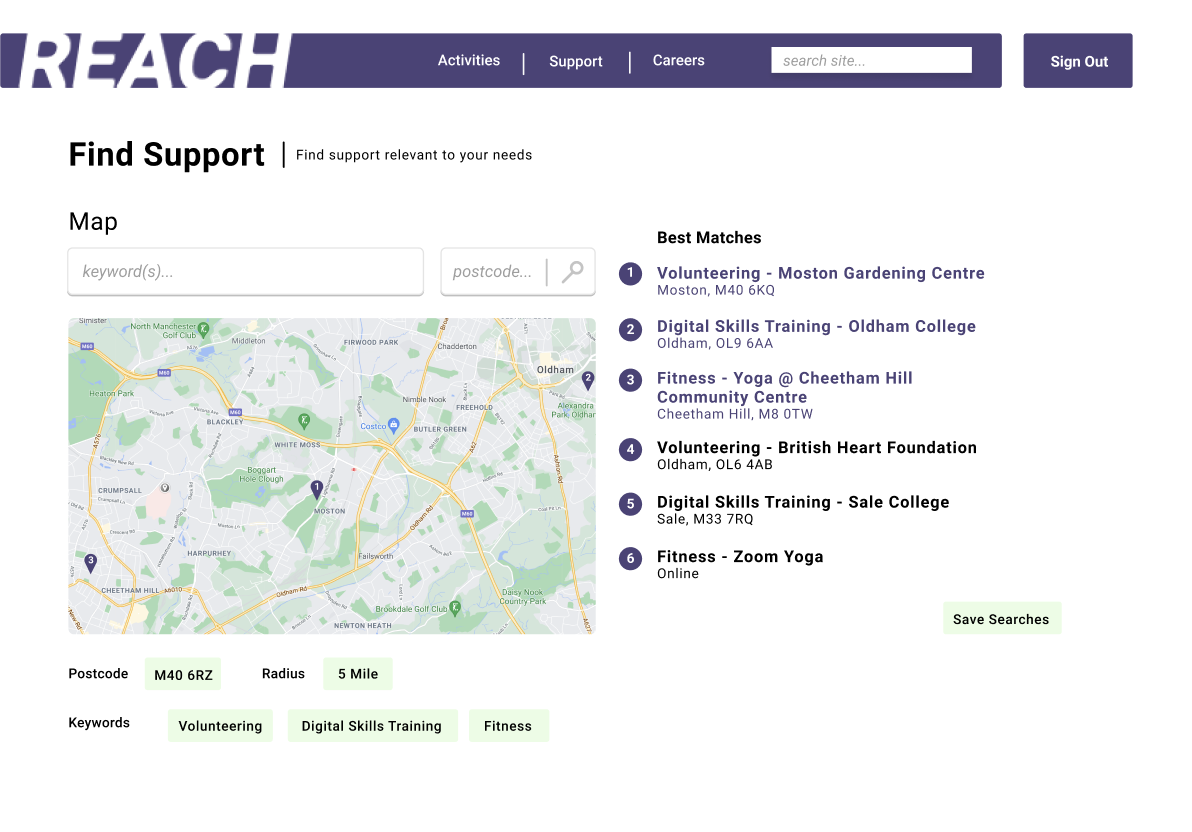
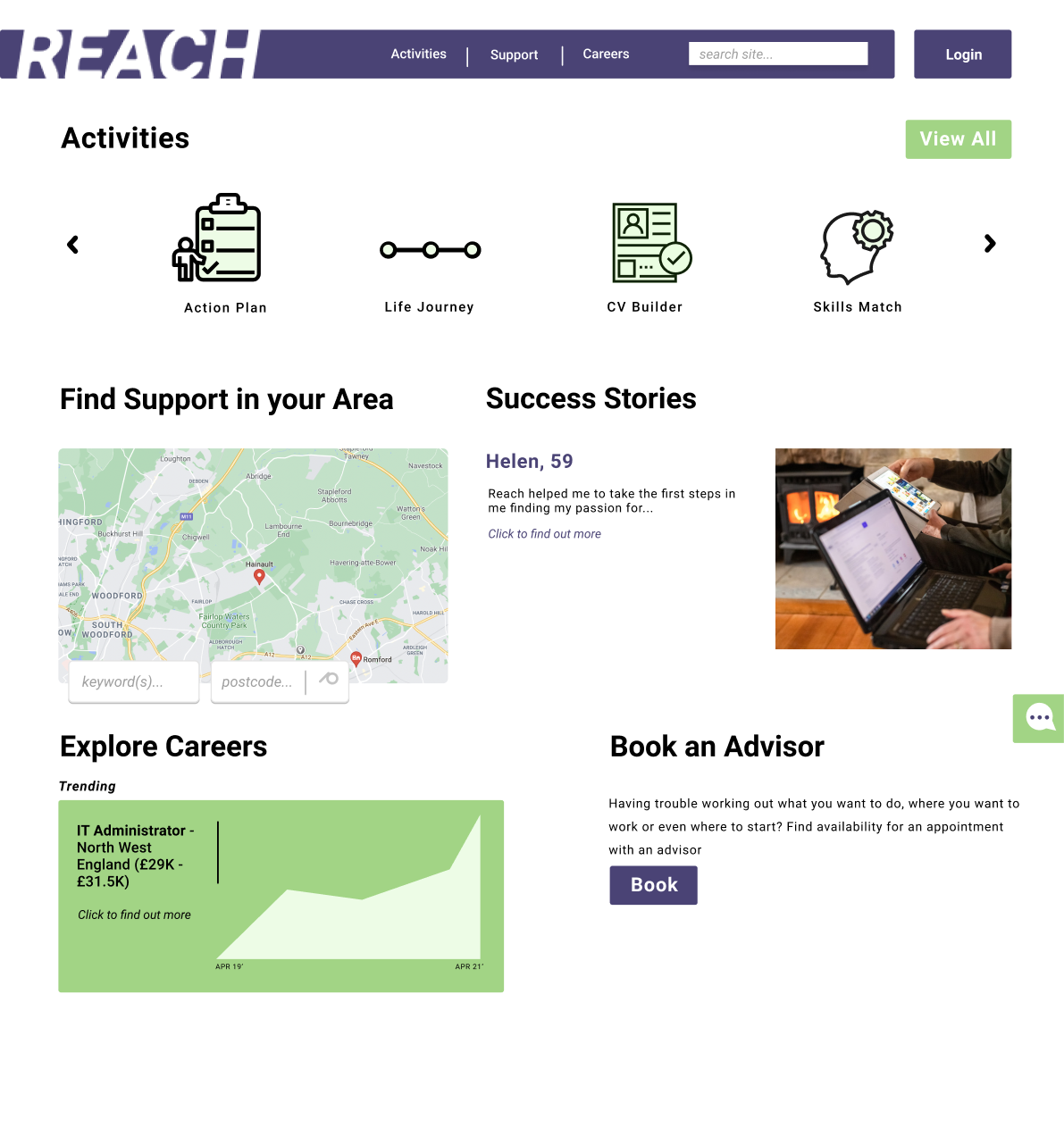
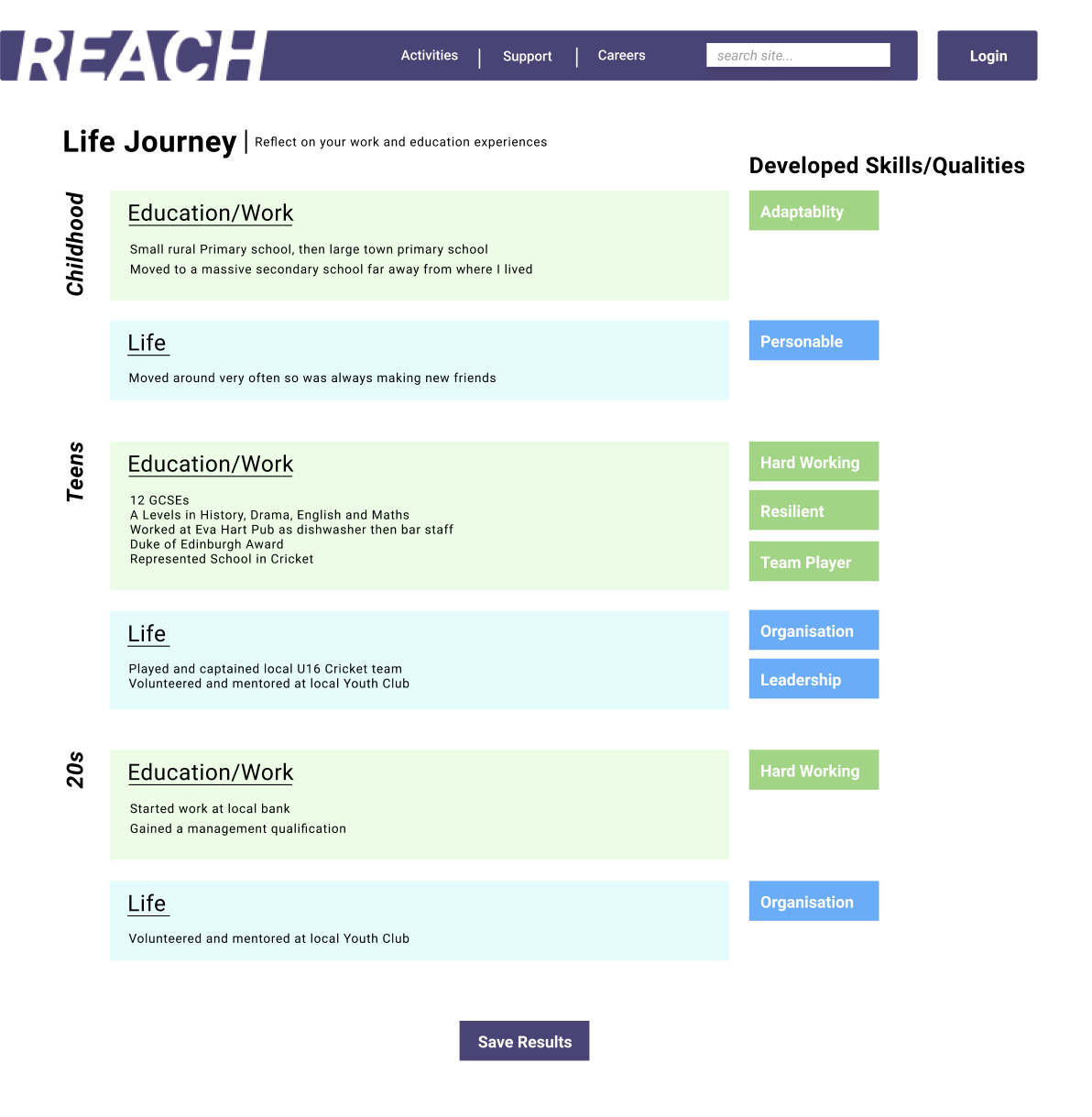
Key Features
Creating a Friendlier Landing.
As a key objective was to improve economic participation, we looked to address one of the root causes of this which was having tools that felt personally made for people to support themselves out of unemployment. Vital to this was making a homepage that was immediately recognisable as being for over-50s and having content that felt personally tailored to them.
Widening Community Engagement through 'Activities in your Area'
A key objective for this project was to think wider than just employment support, but also how over-50s could be encouraged to volunteer and engage with their local community, therefore the 'Activities in your area' page, was important in achieving this.
This feature sought to provide a way to easily allow people to find out what is going on in their own area, using filters to categorise volunteering opportunities, physical activities, mental health support, community events and workshops
Final Prototype
Acting as the UX/UI Lead for Humanly I continued working on these elements with an external designer to refine the UX/UI design of Reach. During this process we worked across different pages on refining the information architecture, implementing hueristics and improving the UI.
Please watch the video below for more detail on key details of the platform.
Testing with users
Testing
We went through usability testing with 8 participants all aged 45 and upwards, who all had lived experience with a variety of journeys leading to unemployment.
Each session lasted 1 hour with, with participants being asked questions related to their opinion of the features, what they would want more of and how they would potentially use this platform
We set a criteria of interviewing Long Term Unemployed, Short Term Unemployed, those that have been made redundant.
Responses
Feedback was overwhelmingly positive, with all participants expressing interest in using a feature on the platform, and most believing it would be a helpful tool to help them find employment again.
Stakeholders were overall impressed with the offering and GMCA,the lead client, are currently looking at how to launch a pilot of the prototype.
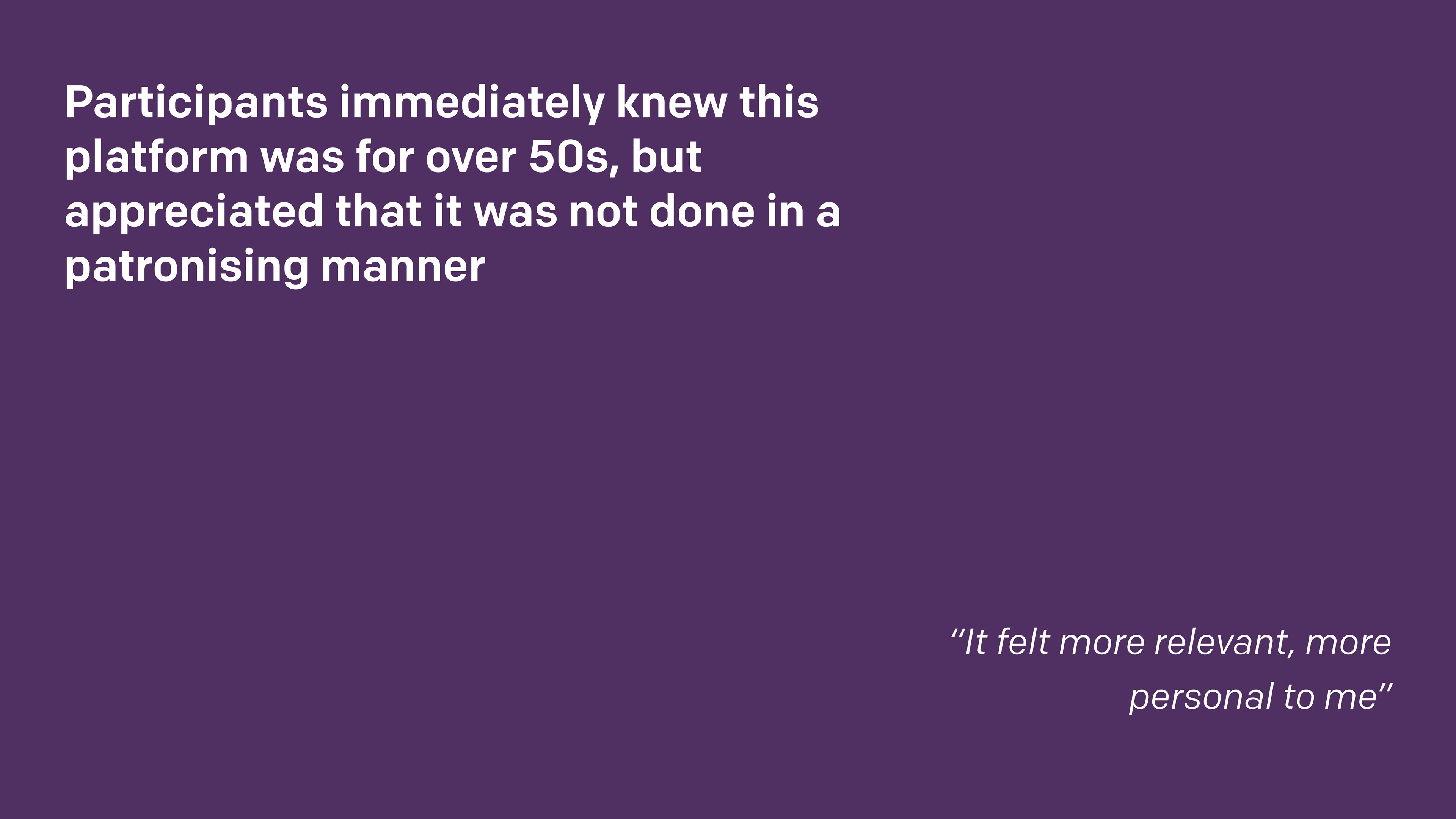


Takeaways and Reflections
This project was pivotal in upskilling my UX/UI knowledge as it involved considering real objectives, and finding a way of
Using my service design skills to zoom in and out of the wider problem and look into the wider system, aided me greatly in contextualising the design development Reach. It reaffirmed the importance of looking around as even though Reach is a key touchpoint, it exists in a wider ecosystem and requires other moving parts for it to work optimally.
GMCA were impressed by the offering and it is now being taken by them to investigate how it could used to turn into a pilot to further test.